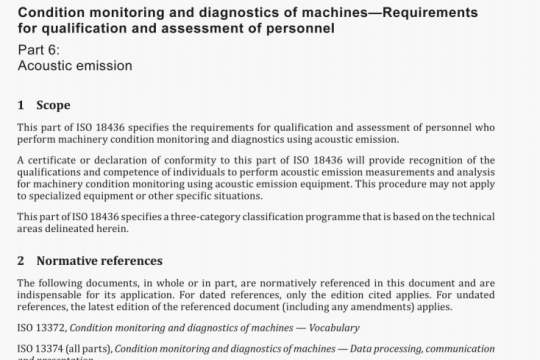ISO 5603:2017 pdf free
ISO 5603:2017 pdf free.Rubber, vulcanized – Determination of adhesion to wire cord
It is essential that the wire cord be stored in a dry atmosphere to prevent any surface deterioration.
Storage can conveniently be carried out in an airtight container which also contains a desiccating material (for example silica, SiO2). The container shall only be opened when removing wire cord and shall then be closed immediately. It is also essential that the cord not be contaminated with dust from the desiccating material.
Unvulcanized rubber compound, conforming to the specification of the bonding system to be investigated. Whenever possible, the rubber shall be freshly milled. If for any reason the rubber cannot be remilled, the surface shall be freshened by wiping with a solvent and allowed to dry. The preferred solvent is heptane, but a suitable alternative could be a petroleum solvent with a distillation range of about 65°C to 125 °C; these solvents shall possess a maximum residue on evaporation of 3 mg per 100 cm3 of solvent. The compound shall be stored at a standard laboratory temperature of (23±2) °C or (27±2) °C prior to use. It can be in the form of calendered sheet of suitable thickness and shall be protected by a dark-coloured polyethylene film.
Reinforcement material, to stiffen the rubber block. This applies only to method 1. The reinforcement can either be a sheet metal strip treated with adhesive promoter (when the thickness t is at least 0,5 mm) or a strip of rigid rubberized steel cord fabric. A suitable fabric is one containing steel cords of high bending stiffness, for example one of construction(1 × 3 × 0,30) mm+ (6 × 0,38) mm [when the thickness t is (2,5±0,1) mm maximum].
Another suitable mould designed to accommodate steel strip reinforcement is shown in Figure 2. A tensioning device for the cords can be used with this mould. Figure 3 details some mould dimensions and describes the exchangeable steel spacers which are required for different cord sizes for the moulds
shown in Figures 1 and 2.
Any mould producing test pieces of the correct dimensions and applying the moulding force directly on to the rubber, for example by use of a suitable spring, is also acceptable.ISO 5603 pdf download.




